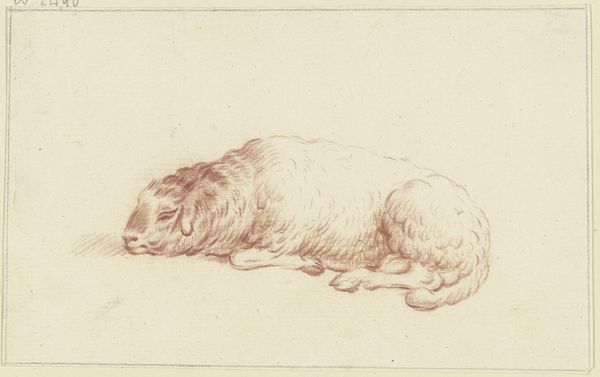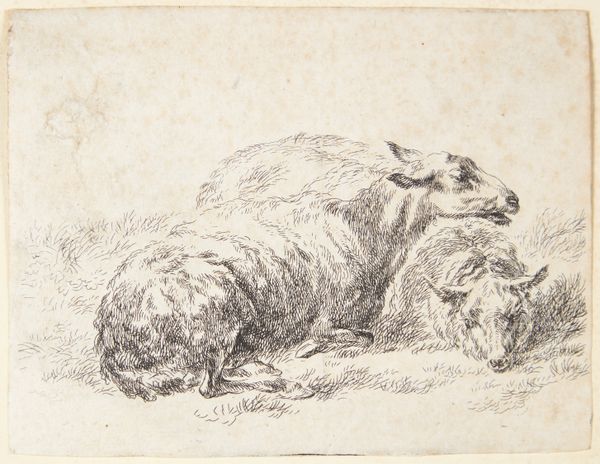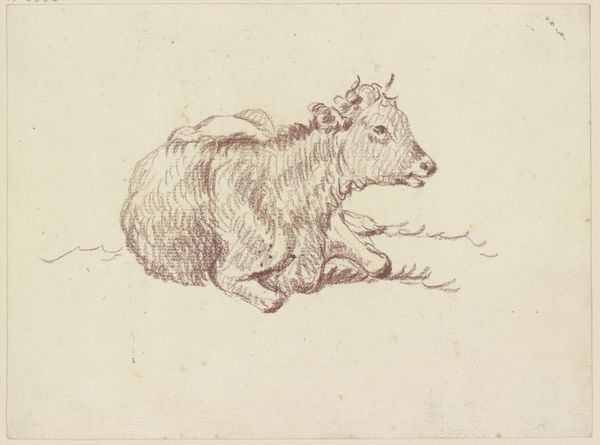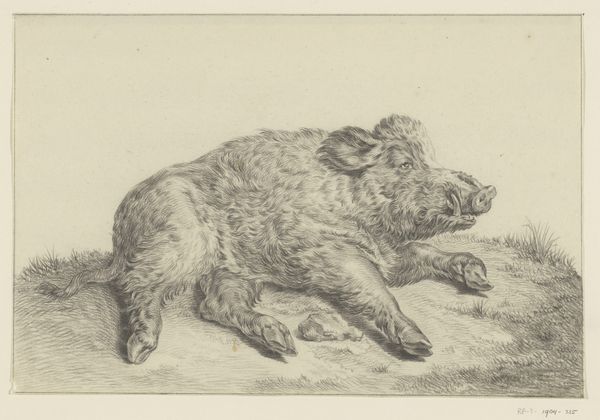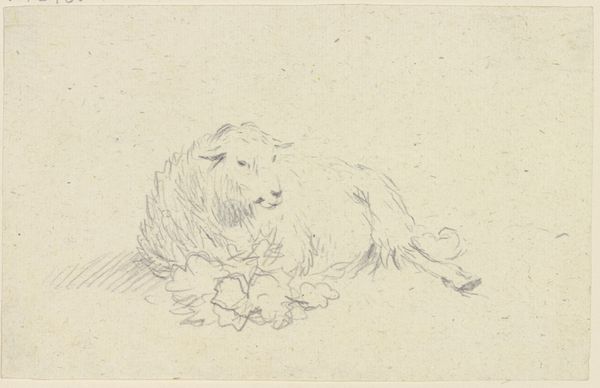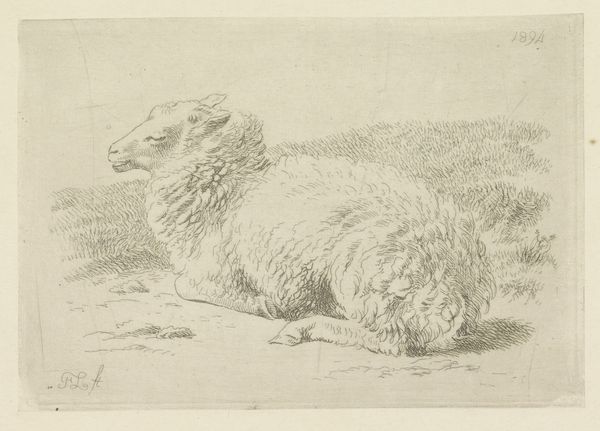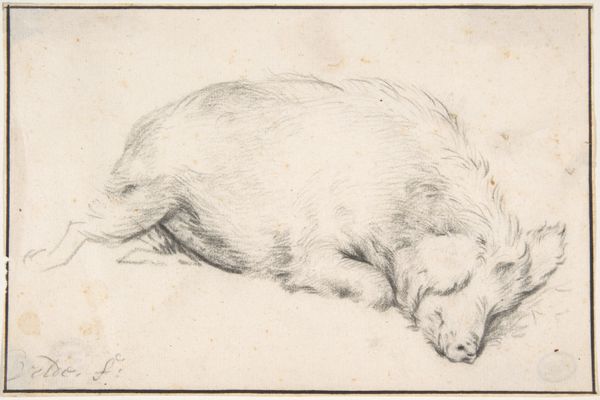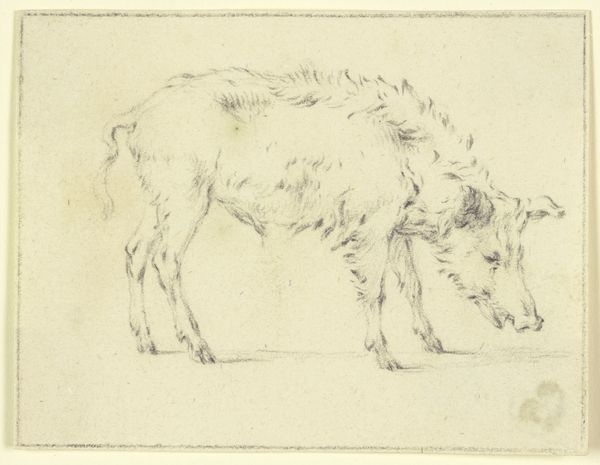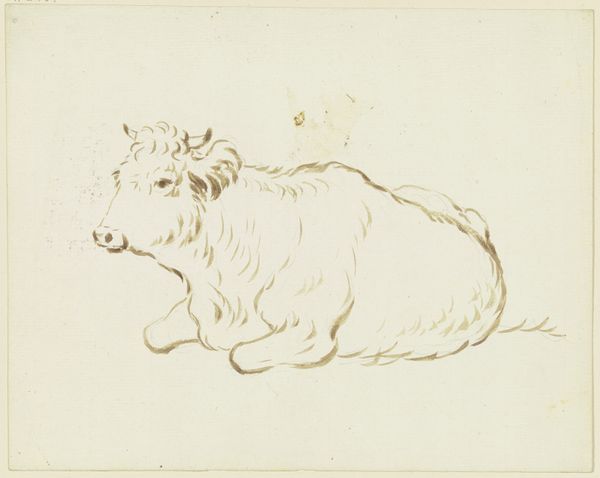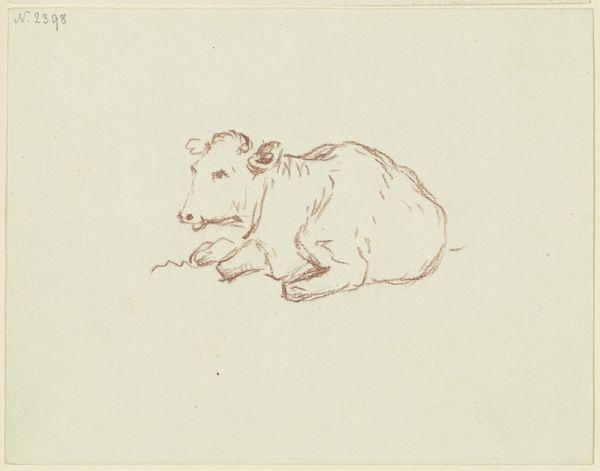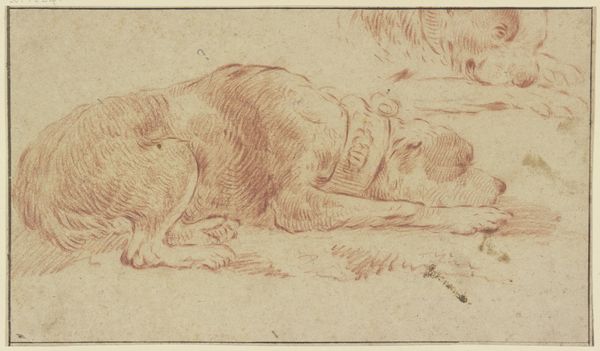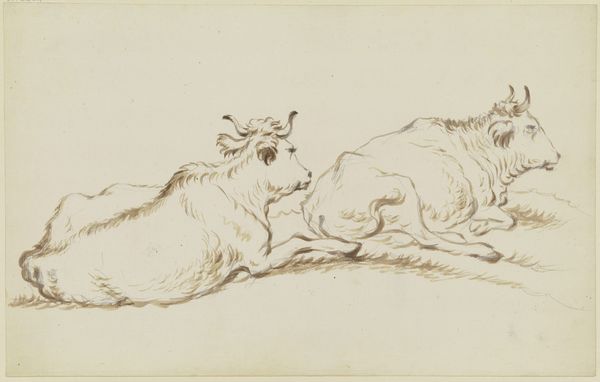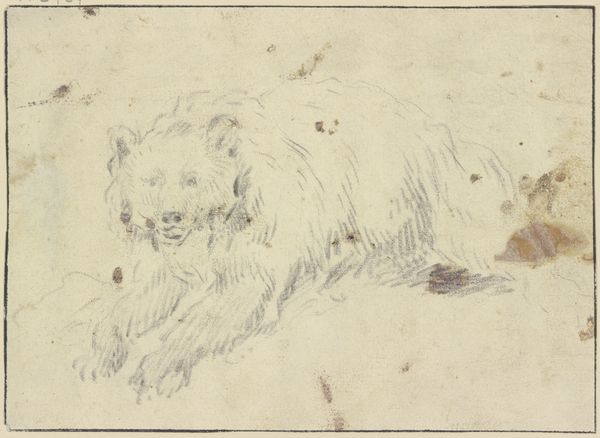
drawing, red-chalk, dry-media, chalk, pastel
#
portrait
#
drawing
#
red-chalk
#
pencil sketch
#
landscape
#
figuration
#
dry-media
#
german
#
chalk
#
15_18th-century
#
sketchbook drawing
#
pastel
#
realism
Copyright: Public Domain
Curator: Here we have "Two Lying Sheep" by Friedrich Wilhelm Hirt. The piece, currently held at the Städel Museum, employs red chalk on paper. Editor: It’s surprisingly tender. I mean, I wasn’t expecting a sketch of sheep to feel so…intimate. They look utterly peaceful. Curator: Hirt was indeed keen on observing the natural world around him, with a sharp eye to details that capture animals in their unselfconscious existence. It’s interesting when considering how landscape painting was gaining importance during the late 18th century. Editor: And the materiality of the red chalk lends itself perfectly to capturing the wool; it has such a tactile quality! I'm fascinated by the physical process of layering the chalk to create this sense of depth. Was this typical material at the time? Curator: Absolutely. Red chalk, along with other dry media, was a popular choice for quick studies, favored by artists for its relative ease of use and ability to render subtle gradations of light and shadow, and allowed the creation of works appealing to a wide segment of the buying public. This also mirrors the burgeoning market for pastoral imagery at the time. The landed gentry’s self-image depended upon the profitability of those sheep and animals. Editor: It’s fascinating to consider how such an ordinary scene connects with larger socioeconomic narratives, through those materials and production, this quick sketch can point to how rural life was understood at that period. Curator: Exactly. This deceptively simple drawing serves as a reminder of the intricate connections between art, nature, and the society that shaped them. Editor: Thinking about how labor and production tie in to aesthetics gives the work a much more robust quality for me. Curator: Indeed. Hopefully you all will depart with new ideas as well!
Comments
No comments
Be the first to comment and join the conversation on the ultimate creative platform.
